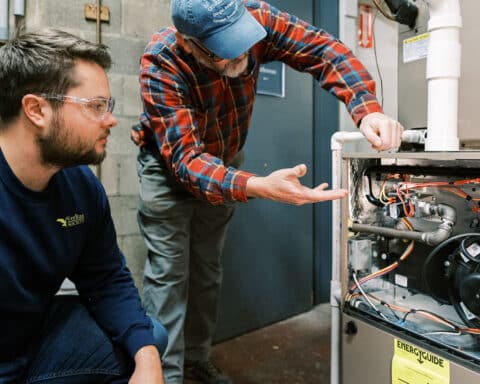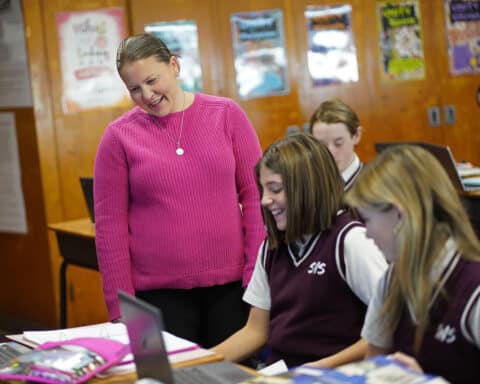By all objective measures, Holy Family Cathedral School in Tulsa, Oklahoma, like many other Catholic parochial schools throughout the nation, was a failing institution. Enrollment was down 77%, with only 88 students enrolled in 2019. Forecasted trends and mounting fiscal shortfalls forced administrators and diocesan leaders to seriously consider the closure of its oldest and most iconic school (the school was founded by none other than St. Katharine Drexel in 1899). In a last-ditch effort to revive the school, the diocese decided to turn the school “classical.” A new headmaster was appointed, faculty were quickly prepared, a classical curriculum was adopted, and in the fall of 2020, Holy Family Cathedral School opened its doors as Holy Family Classical School.
Far surpassing all reasonable expectations, the change resulted in exponential growth of the school and a renewed excitement in the parish. In a mere three years, the enrollment of Holy Family Classical School tripled. The aging demographics of the parish community rapidly changed with the influx of families with many school-aged children. The school now has swelling waitlists for most grades, and a high school curriculum had to be added to meet parental demands. Currently, the parish and school are seeking creative ways to accommodate the mounting demands of a thriving and growing community desirous of a more traditional model of ecclesial life and formation.
This trend is not unique to Holy Family or Tulsa. Similar results have occurred in dioceses throughout the nation. Since 2020, there have been over 200 new Catholic “classical” schools established in the United States and a 78% enrollment increase in established classical academies. Whether diocesan sponsored, independent, online or conventional brick-and-mortar, there has been — without doubt — a tsunami of interest in Catholic classical education.
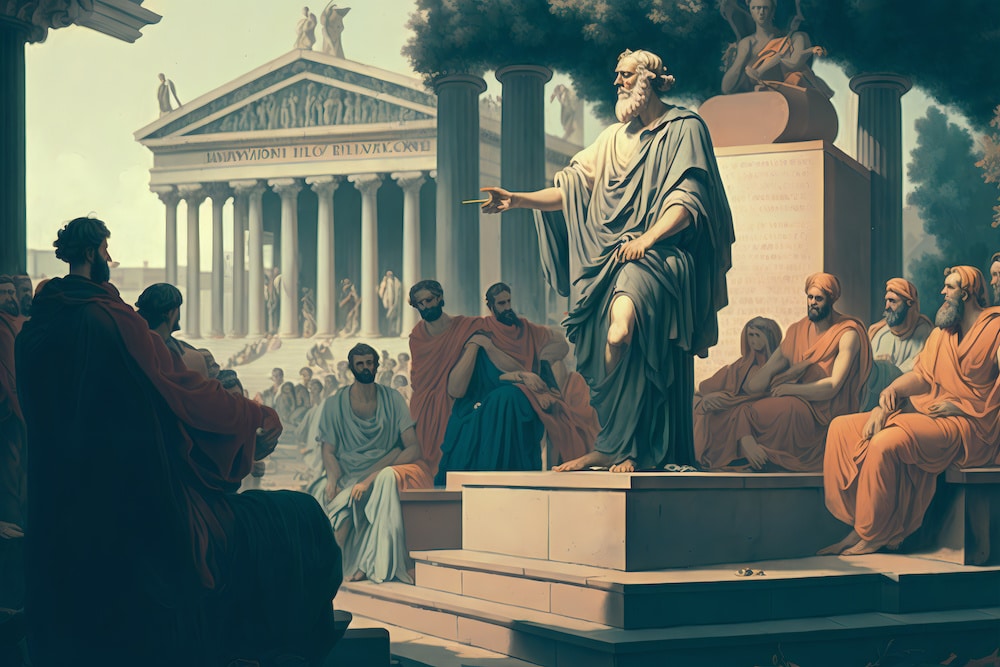
To the observant and inquisitive Catholic, this spike in alternative schooling raises two very foundational and interesting questions: (1) what exactly is a Catholic classical education, and how does it differ from various contemporary models, both secular and parochial? And (2) why are so many modern Catholic parents attracted to the classical model? In answering these questions, I hope to explain the success of Holy Family and the apparent springtime of classical education underway in the Diocese of Tulsa and many places across the U.S.
Catholic classical education
The aim and purpose of all education, whether classical, secular or parochial, is twofold: the acquisition of truth and the formation of culture. Whether we are discussing the Lyceum of ancient Greece or the local trade school in Cleveland, they all aim to transfer some kind of knowledge to their students and initiate them into a shared life. Although all schools share this universal binary orientation, they differ — and differ greatly — on account of what particular end the school chooses to stress and how the school chooses to understand and pursue these ends. For example, the finishing schools of the early 20th century, such as the Swiss Château Mont-Choisi or the U.S.-based Finch College, stressed the importance of a shared life and inculcated their students into a unique way of acting and behaving that was befitting a young woman of that era. Similarly, schools — such as many modern online academies — choose to emphasize the quest for knowledge and, by design, have very little formation in culture. Additionally, there are schools that have a very narrow or specific understanding of the truth that is being sought, such as MIT, which pursues innovative technologies, or your regional welding school, which trains students in the art of bending and binding metals.
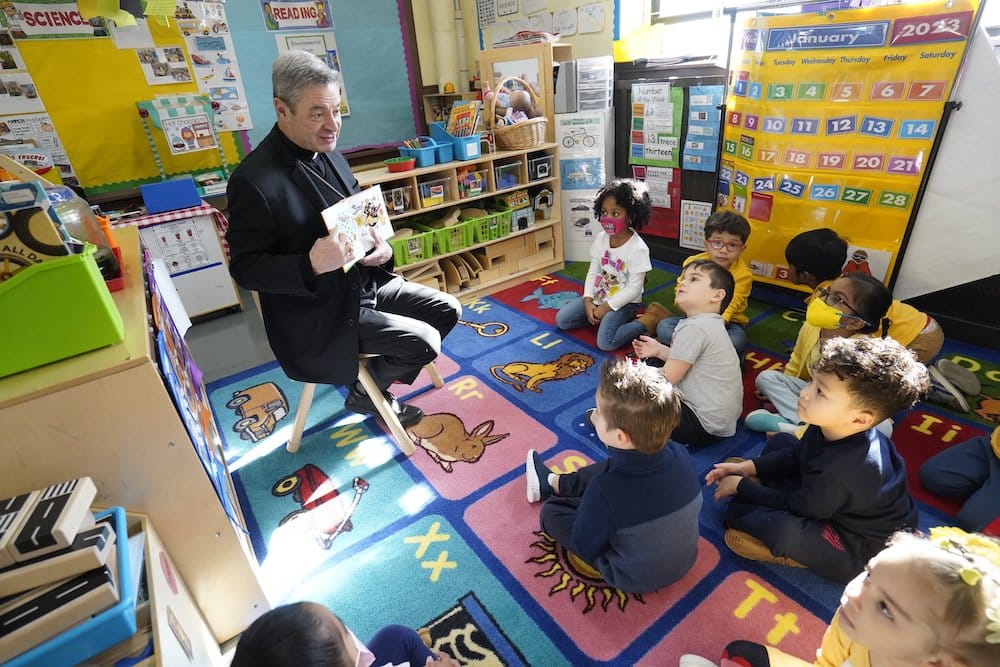
What makes Catholic classical education distinct is not that it falls outside the educational binary but that it seeks — rather boldly — to form students in the totality of truth and intends to initiate them into the breadth of Western civilization.
Transmitting the full truth
Instead of pursuing a narrow or focused transmission of knowledge in a particular field or discipline with some utilitarian goal in mind, Catholic classical schools aim at the acquisition of truth for the sake of truth itself. It’s not directly interested in passing on knowledge to prepare students for the labor market (although it does do this, and does it well), but rather focuses on exposing them to the breadth of knowledge available to the human person.
What makes Catholic classical education distinct is not that it falls outside the educational binary but that it seeks — rather boldly — to form students in the totality of truth and intends to initiate them into the breadth of Western civilization.
In his 1987 speech addressed to U.S. Catholic educators, Pope St. John Paul II simply states that Catholic educators are charged with “transmitting the full truth.” This “full truth” includes not only the knowledge proportionate and accessible to natural human reason (one’s knowledge of writing, reading and arithmetic, for example), but also — and more importantly — the knowledge that surpasses human understanding; the knowledge, as St. Paul writes that “eye has not seen, and ear has not heard” (1 Cor 2:9), namely, the knowledge of God himself. In other words, Catholic classical education includes the explicit quest to understand the very inner life of God and, by extension, his loving relationship with his creation. Catholic classical education thus has — rather uniquely — a supernatural horizon and orientation. Importantly, this supernatural vision does not eclipse or nullify the lower natural horizon of learning, but rather perfects and elevates it. By studying the natural disciplines under the light of faith and the guidance of the Church, the student is freed from the limitations of reason and the potential for error and can rise to the contemplation of truth itself.
5 NORMS OF CHRISTIAN LIVING 1. The dutiful avoidance of sin and its near occasion. 2. The arduous cultivation of moral and intellectual virtue. 3. The earnest search for and maintenance of good friendships. 4. The pious adherence to the laws and precepts of Holy Mother Church. 5. The docile openness to God's salvific grace.
Inculcating the breadth of Christian culture
Catholic classical education not only teaches the whole truth, but also helps students live in accordance with it. By slowly conforming one’s life to the truth, the student begins to live and act in a way that is befitting a person called a “Christian.” One learns how a person who has been entrusted with such radiant and splendid gifts as reason and faith ought to order oneself and the things entrusted to his or her care. In doing so he or she becomes an active member of a noble society that stretches all the way back to the ancient Greco-Roman worlds, culminates in the life of Christ and extends all the way into eternity. To enter into this community, not just speculatively but practically in word and deed, is the jewel upon the crown that is Catholic classical education and the enduring hope of the fallen world.
Although there are important historical variances on how this Christian way of life may manifest itself, there are, nonetheless, certain norms that span every place and time. To live and act as a Christian means: (1) the dutiful avoidance of sin and its near occasion, (2) the arduous cultivation of moral and intellectual virtue, (3) the earnest search for and maintenance of good friendships, (4) the pious adherence to the laws and precepts of Holy Mother Church, and, most essentially, (5) the docile openness to God’s salvific grace. Aware of these norms, a Catholic classic school communicates and invites its students into this shared vision of living by the reading of good and great books, the careful curating of an environment conducive to virtue, and the radical witness of its faculty.
In “The Death of Christian Culture,” John Senior poetically refers to literature as the “beast of burden” of culture. More so than a logical argument or theological treatise, a good narrative stirs the human spirit and elicits a desire to imitate. Who among us has not admired Hector’s piety in “The Iliad” or read Socrates’ rousing defense in “Apology” and not longed to become a philosopher, or read “The Life of St. Francis” by Bonaventure and not vowed to embrace Lady Poverty? The good and great books not only instruct but perhaps, more importantly, inspire readers to live good Christian lives. They provide students with a moral image of how one ought to act and live. In many ways, all these texts either point forward or refer back to the perfect archetype and standard of right living, Jesus Christ.
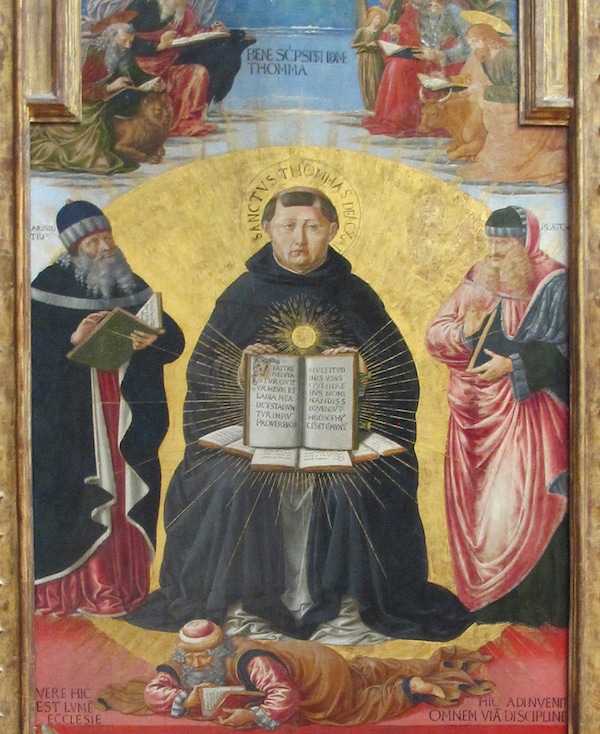
A Catholic classic school is also careful to provide an environment in which the human soul can advance toward this ideal. Just as soil needs to be worked and augmented to produce good fruit, so too does the environment of a school need to be carefully tilled and fertilized to produce good students. Of course, in order to curate such an environment, administrators and faculty need to be keenly aware of what are real aids and what are potential hindrances in the pursuit of human flourishing. This requires knowledge of the human person and clear understanding of humanity’s end, both natural and supernatural. The environment, states St. Thomas Aquinas, “adds much.” The architecture of a school, the materials utilized in the building, the furniture and its arrangement, the uniforms adopted, the kind and quality of food served, the hours of operation, the various institutional customs, etc., all of these and more either aid or hinder the student’s growth in truth. Nothing in the environment is indifferent or inconsequential. It all matters and, consequently, a Catholic classic looks and feels quite unlike their secular and parochial counterparts.
More important than books and the environment is the faculty of the school, which is paramount in transmitting a Christian culture. Acting in the place of parents, they share in a very special way in the office of sanctifying. To the very best of their ability, the faculty illustrate, in their very persons, the art of Christian living. They hate sin, exercise the moral and intellectual virtues, foster deep and abiding friendships among themselves, have filial obedience to the teaching authority of the Church, and are radically dependent upon the graces at his or her disposal. In doing so, the faculty incarnate the ideal for their students. He or she becomes a living testament of the “good life.” Most importantly, the faculty at a Catholic classical school embody a joyful and infectious charity for God, for each other, for the students and for the school’s discipline. Ultimately, it is this genuine love, which according to St. Paul covers a multitude of sins, that draws the souls at a Catholic classical school into embracing a Christian way of life.
In sum, Catholic classical education is defined by its bold mission to transmit the totality of truth, both natural and supernatural, and its open and intentional invitation to adopt a Christian mode of living animated by a radical charity by reading great books, providing a fit environment, and by the witness of its faculty.
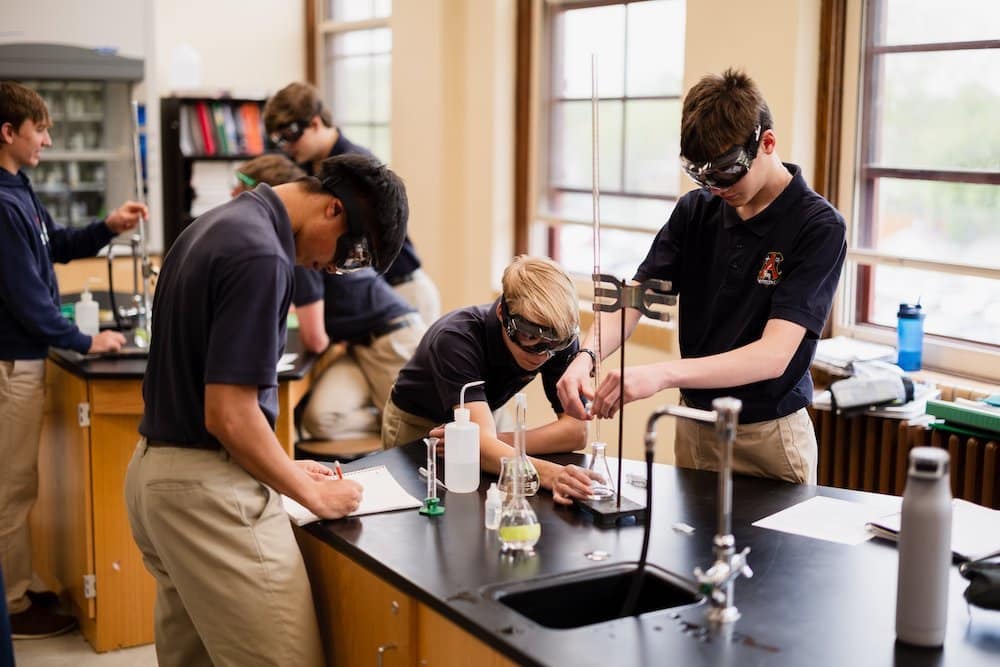
The lure of Catholic classical education
At first blush, the lure of Catholic classical education may simply be its “otherness.” Catholic classical education is not public education. In 2020, parents got a glimpse of the bureaucracy of public sector education. The pandemic offered parents a rare opportunity to see its darker underbelly. It revealed, in many though not all places, a system that prioritizes staff over students, an administration that has a disdain for parental rights, a hollowed-out and often vacuous curriculum, and a teaching class motivated by political ideology and a false anthropology. For many parents, this was enough for them to seek alternative educational opportunities.
The good and great books not only instruct but perhaps, more importantly, inspire readers to live good Christian lives. … [T]hese texts either point forward or refer back to the perfect archetype and standard of right living, Jesus Christ.
This initial flight, however, is not the only — nor sustaining — motive for parents. For many, Catholic classical education offers a more humane and more fulfilling way of learning. In addition to its willingness to disclose the vast horizons of human reason and its warmhearted invitation to students to mirror the life of Christ, Catholic classical education has many other demarcating features that both parents and students find attractive. For the sake of brevity, below are four elements of Catholic classical education that distinguishes it from the typical modern classroom.
Primarily poetic
At its core, Catholic classical education is a formation in reality. It introduces students to what metaphysician’s call “being,” or what the scholastics once called “esse,” and it teaches them to simply marvel at the profundity of reality. Rather than pursuing a mere abstract technological mastery of a thing, classical education seeks first and foremost to enkindle a spontaneous admiration and delight in an object. Such a stance requires the passive openness to the creative beauty of all of reality. This leisurely disposition does three very important things: (1) it heals the agitated modern soul, (2) it thickens the moral imagination, and (3) it forms the aesthetic sense. All three are very much needed today, and parents are eager to find schools able to offer this kind of “poetic” formation.
Intentionally integrated
Parents are also keen on seeking out schools that offer an integrated education. One of the sad features of modern secular education is its fragmentation. Following certain philosophical and pedagogical trends, modern education divides the student and the curriculum, and separates the illuminating and vivifying power of faith from both. In contrast, a Catholic classical education works to mend these unnatural schisms and offers an integrated formation at all three levels. It intentionally incorporates the habits of right reasoning with the habits of right living. It proposes a proven path of study (traditionally the artes liberales), which gives students the means to rightfully interpret and understand all of reality as an intelligible whole. Lastly, it stresses the transformative and integrative power of faith in shaping how one understands and how one lives.
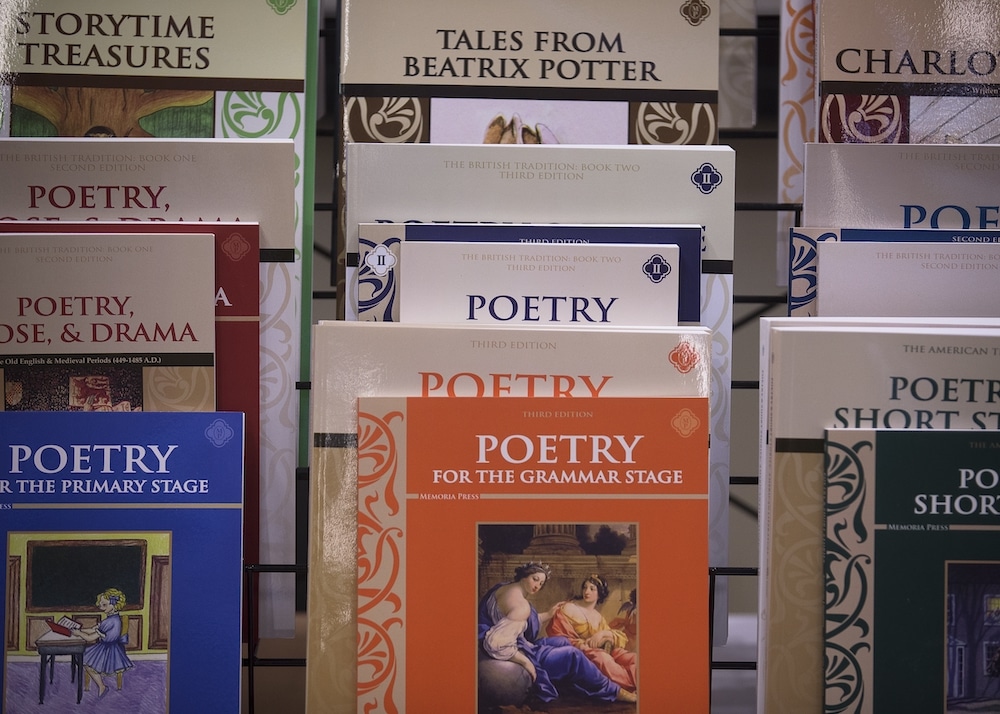
Specially Socratic
The particular pedological mode that is adopted at most Catholic classical schools is also highly sought after by parents. Most classical academics utilize what is often called the Socratic method. Instead of a lecture-based approach to teaching (think here of Professor Grandgrind in Dickens’ “Hardtimes,” who is described as a “canon … loaded with facts” and is prepared to blow his students clean out of “regions of childhood”), faculty at classical schools enter into dialogue with their students. Mirroring the teaching style of both Socrates and Christ, teachers ask open-ended questions to solicit meaningful conversation about perennial truths contained in the text under investigation. Such an approach demands that students learn to think for themselves, to be active agents of their own learning, and not simple passive recipients. As such, the pedagogical approach used in Catholic classical schools encourages students to take responsibility for his or her own thoughts, words and deeds; and by doing so, it brings the students closer to genuine human liberty.
Lavishly liturgical
The Catholic historian Christopher Dawson once wrote that “the great civilizations of the world do not produce the great religions as a kind of cultural by-product; in a very real sense the great religions are the foundations on which the great civilizations rest.” The same can be said of schools. The vitality of any school is bound up and founded upon its religious practices. Catholic classical schools have — at their core — a robust liturgical life. The liturgical actions of a school bind all things together — faith and reason, thought and deed, nature and science, students and teachers, saints and sinners — into a coherent and integrated whole. This communion reaches its culmination in the Mass, which is the highest form of knowing and loving and thus both the end and beginning of authentic education. Catholic classical schools know this and go to great lengths to ensure frequent, beautiful, reverent and joyful liturgies.
Of course, there are many other unique elements of classical education in the Catholic tradition: its robust emphasis on music and art, its appealing teacher-to-student ratio, its often-unique governance structure, its inclusion of classical languages, its culture of strong parental involvement, its Salesian approach to discipline, to name but a few. The four listed above, however, are the most enumerated when parents are asked why they are considering sending their children to a Catholic classical school.
| POPE ST. JOHN PAUL II ON CATHOLIC EDUCATION |
|---|
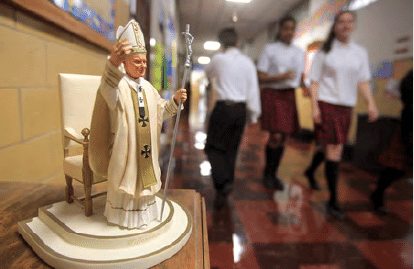 “No Catholic school can be effective without dedicated Catholic teachers, convinced of the great ideal of Catholic education. The Church needs men and women who are intent on teaching by word and example — intent on helping to permeate the whole educational milieu with the spirit of Christ. This is a great vocation, and the Lord himself will reward all who serve in it as educators in the cause of the word of God. “In order that the Catholic school and the Catholic teachers may truly make their irreplaceable contribution to the Church and to the world, the goal of Catholic education itself must be crystal clear. Beloved sons and daughters of the Catholic Church, brothers and sisters in the faith: Catholic education is above all a question of communicating Christ, of helping to form Christ in the lives of others. “In the expression of the Second Vatican Council, those who have been baptized must be made ever more aware of the gift of faith that they have received, they must learn to adore the Father in spirit and in truth, and they must be trained to live the newness of Christian life in justice and in the holiness of truth. “These are indeed essential aims of Catholic education. To foster and promote them gives meaning to the Catholic school; it spells out the dignity of the vocation of Catholic educators. “Yes, it is above all a question of communicating Christ, and helping his uplifting Gospel to take root in the hearts of the faithful. Be strong, therefore, in pursuing these goals. The cause of Catholic education is the cause of Jesus Christ and of his Gospel at the service of man.” — Pope St. John Paul II, speaking to the National Catholic Educational Association of the United States at the Vatican on April 16, 1979 |
Springtime in the Diocese of Tulsa
Rather unexpectedly, the classical education renaissance well underway throughout the nation has found fertile ground in the Diocese of Tulsa. In the past five years, the eastern half of the state of Oklahoma has experienced a flurry of initiatives that can broadly be included under the umbrella of “classicism.” In addition to the revival of Holy Family Classical School, the Diocese of Tulsa has newly transitioned another parochial K-8 school to a classical model of education. Sts. Peter and Paul will be offering a liberal arts curriculum to its mostly Spanish-speaking student population in the fall of 2024. Having two classical schools in a diocese may not seem significant to many of the larger sees in the U.S., but for Tulsa it represents a striking 30% of its parochial schools that are classical. Not insignificantly, there is also a large and very active diocesan supported K-12 homeschooling co-op that utilizes a thoroughly classical curriculum. Additionally, in the fall of 2024, the Diocese of Tulsa, in partnership with the Archdiocese of Oklahoma City, will launch St. Isidore of Seville Catholic Charter School, the nation’s first state-funded religious school with an expected first-year enrollment of 500 students.
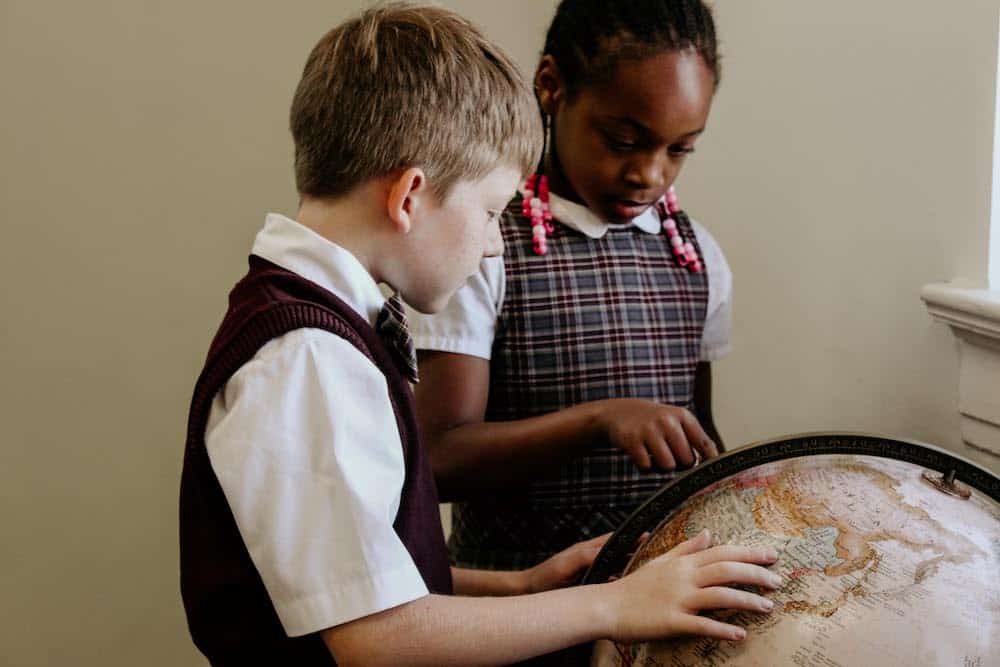
At the post-secondary level, the diocese has recently welcomed the Catholic philosopher Jennifer Frey, who has been charged with the governance of the newly established Honors College at Tulsa University. The Honors College offers a two-year great books curriculum, which, although not Catholic per se, is nevertheless animated by the great wisdom tradition of the Church.
Lastly, the Diocese of Tulsa has chosen to extend the classical approach not only in its schools but also its parishes. Through the ministry of the Alcuin Institute for Catholic Culture, the diocese offers a formation to all of its parish educators (teachers, catechists, deacons) that is classical in both its approach and content.
All and all, the classical renaissance underway in the Diocese of Tulsa is a model for other dioceses and a destination for Catholic parents seeking a classical model of education where their sons and daughters can encounter Jesus Christ and experience his transforming love and truth in a very real way.


